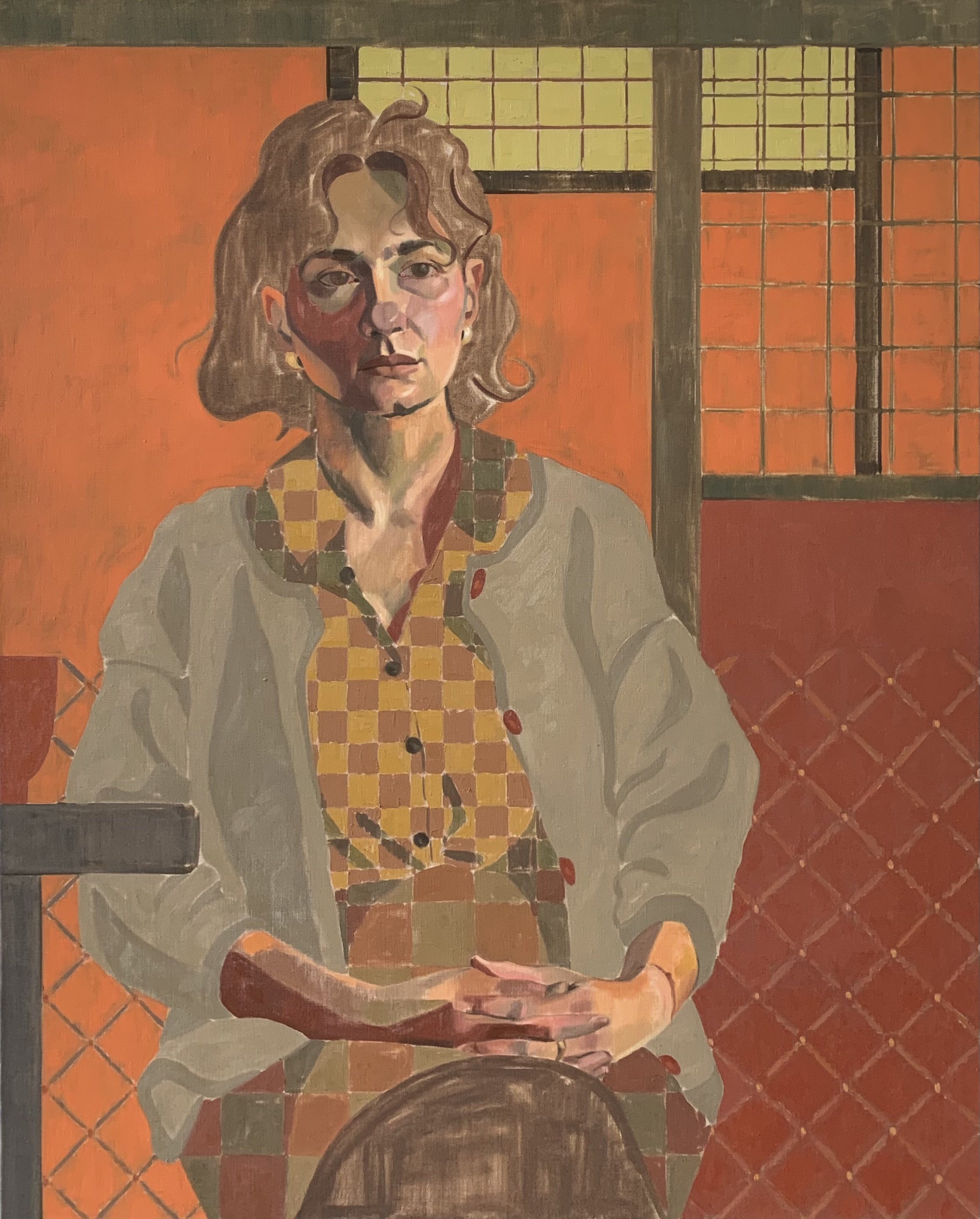ARTIST INTERVIEW: Kayoon Anderson
Can you tell me about yourself & your journey as an artist
I was born in Seoul, South Korea and grew up in London in a multicultural household. Since childhood, I’ve never been particularly good at expressing myself through words and have always looked to reading and drawing for peace. I studied architecture at university, and it wasn’t until after graduating that I seriously considered a career as an artist. People were the most fascinating subjects to paint, and I trained at Heatherleys School of Art where we were taught to paint portraits from life.
Influenced by Korean and Italian art, how do you incorporate these styles into your own work? Who are your favourite artists and why?, do they have an influence on your work?
After my degree, I lived in Siena for a while and was amazed by the earthy colours that surrounded us. When the fields outside the city were being tilled, the soil was the colour of ‘burnt Siena’ - the same now as it would have been when used by the medieval masters. Seeing the art there and in Florence led to my fascination with early Italian renaissance paintings, such as by Paolo Uccello and Masaccio. Uccello’s ‘Battle of San Romano’ paintings are perhaps my ultimate inspiration – the way he combines flat areas of colour, pattern and naturalistic representation to create an abstract, yet well-considered design, is something I also aim for in my work.
The still life munbangdo paintings of Korea depict symbolic collections of objects from the East and West. These paintings have a sense of balance and harmony through their careful compositions in a way that I think is similar to those of the early Italian renaissance. In both there is a clear structure and an ambiguous depth of space with varying perspectives shown.
Vuillard, Norman Blamey and Zoey Frank are just a few artists whose work I also greatly admire.
Merry-Go-Round
Describe your creative process. Where do you find inspiration?
I’m currently creating paintings about my childhood in Korea and the UK, so have spent some time going through old family photos which has been really fun. When deciding what to paint, I mainly look at the shapes of figures and the moods created by their body language. I digitally scan the photos, take the figures into photoshop and create basic scenes around them. I’m aiming to portray a simple yet ambiguous space by incorporating flat colour and pattern alongside naturalistically painted flesh.
When I’m happy with the composition, I think about colour. Other than for flesh, all colours are made up and I try to keep each painting within its own small colour range. Finally, I plan in my head which shapes on the canvas will be tonally darkest and lightest, which will be most saturated, which will be flat blocks of colour, and which will have pattern. I start painting and see what happens.
Three Men
You studied architecture; how does this influence your work?
To be honest, I’m not sure if there’s been a huge amount that’s carried through from studying architecture. For a while I pushed against portraying any kind of architecture in my paintings, and even now, the spaces that my figures inhabit are very simplistic and lack depth. I don’t want the paintings to be about the specifics of the space or even the figures. They sit within the architecture as a part of it, without clear distinction between them and their surroundings. I’d like to create a general grounded and nostalgic environment.
However, one thing that my study of architecture might have done is push me to build my paintings geometrically. I always strive for balance and harmony in composition.
What is your favourite painting that you have produced?
Perhaps ‘Grandpa and Baby in Blue’ – this was my first painting exploring the theme of childhood and parenthood. For me, it’s my most successful painting in achieving an ambiguous yet harmonious composition that is on the border between realism and abstraction. Blue is a colour that I usually avoid in my paintings, but here I surprised myself by how much I enjoyed using it.
Baby and Grandpa in Blue
Does art help you in other areas of your life?
I usually paint the people close to me, such as my family, so I’d like to think that representing them in my art has helped me understand and appreciate them more.
What are your favourite tools to use when painting?
Photoshop is essential as it’s the starting place for most of my paintings. Also, my mini-projector – I use it to block out first marks on the canvas and for painting patterns. I like to make stencils out of acetate for patterns too.
Pat in Orange
You’re a semi-finalist from Portrait Artist Of The Year. What did you gain from that experience?
I’m very grateful for Portrait Artist – it was a wonderful experience, and the best thing is the amazing people I met through the show. It has led me to friends who are also figurative painters, and being able to talk with them and share advice has been invaluable.
Why do you think art is important in society?
For me, art is a way to understand and appreciate different people’s cultures and perspectives. It’s such a universal language. I think seeing a great painting is like reading a good book – it allows you to see the world through someone else’s eyes.











